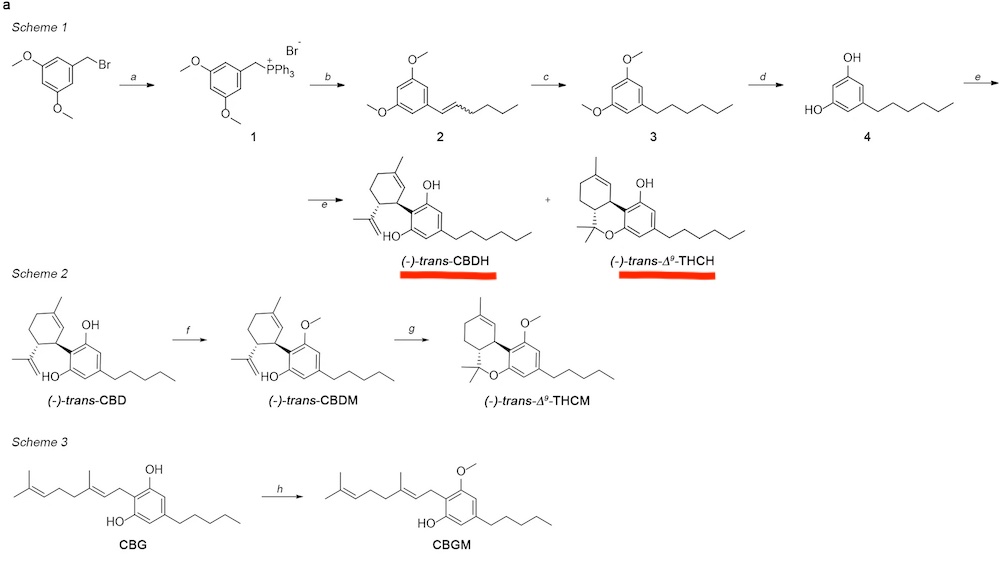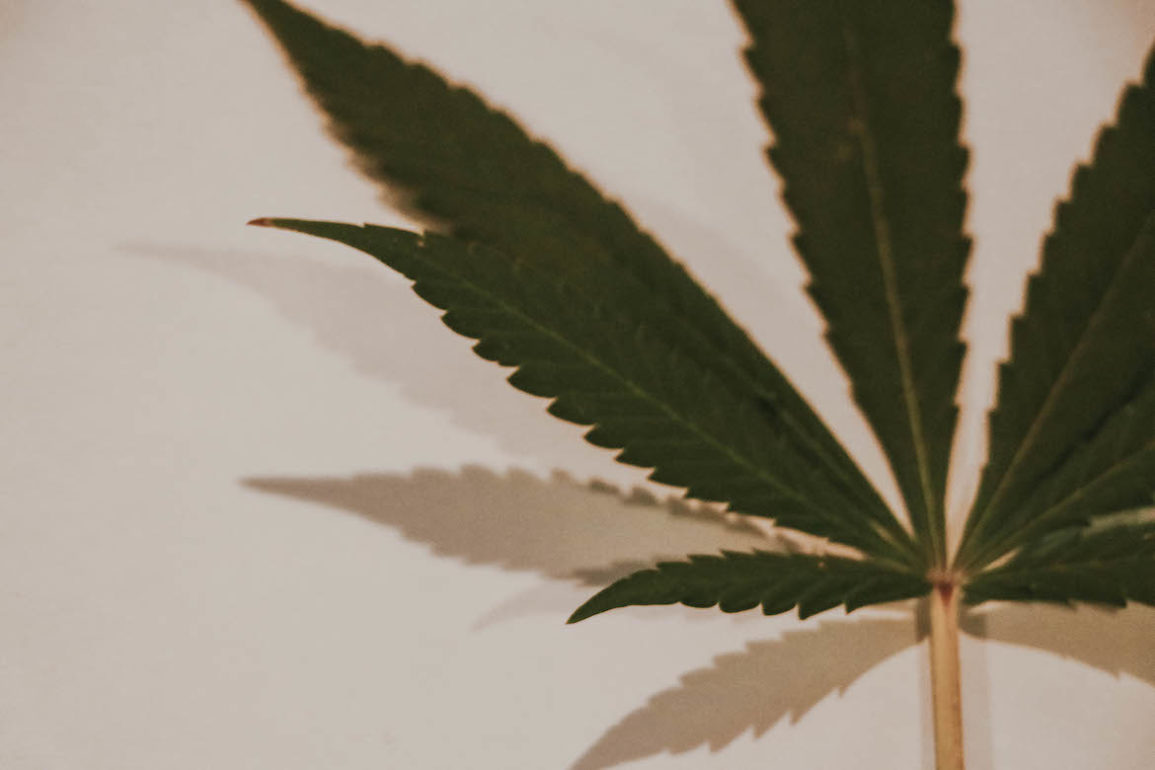Summary:
- CBDH could be a potent pain-reliever — more so than CBD due to its molecular structure (5 alkyl side chain vs 6 alkyl side chain).
- CBDH in lower doses (1.2–2 mg/kg) in mice test subjects reduced pain quite significantly, higher doses (2–5 mg/kg) showed no benefits at all.
- Researchers theorize CBDH activates vanilloid receptors the same way as CBD to promote pain relief — could be useful as a therapeutic or medicinal cannabinoid.
- THCH, a THC variant with a 6 alkyl side chain, was also discovered. Researchers couldn’t extract a sufficient sample to test with. Its effects and benefits are currently unknown.
- CBDH and THCH products aren’t available right now but we’re excited to see them in the future!
Cannabis is just a gift that keeps on giving. At present, there are approximately 150 identified cannabinoids in varieties of cannabis, each with its own unique effects and benefits.
The two most famous (and researched) cannabinoids are tetrahydrocannabinol (THC) and cannabidiol (CBD). THC is psychoactive, psychotropic, and intoxicating, while CBD is psychoactive, non-psychotropic, and non-intoxicating.
Other common but “minor” cannabinoids include cannabidivarin (CBDV), cannabigerol (CBG), and cannabinol (CBN).
However, researchers are still discovering new and exciting cannabinoids, some of which could reshape how we view cannabis, its compounds, and what they can do for us.
At the end of 2020, the same researchers who accidentally discovered tetrahydrocannabiphorol (THCP) and cannabidiphorol (CBDP) only a year prior, have now unearthed cannabidihexol (CBDH) and Δ9– tetrahydrocannabihexol (THCH) from the same cannabis strain.
How were CBDH and THCH discovered? How can they help you? How do they compare to other cannabinoids?
CBDH exhibits pain-relieving qualities (much like its CBD counterpart)
This is the most interesting part of the study. When the Italian researchers identified CBDP a year ago, they found it had very little affinity with cannabinoid receptors and didn’t activate them the same way THCP did.
The same cannot be said for CBDH — not even in the slightest.
Researchers were able to obtain a sufficient sample of CBDH and analyze its pharmacological effects in mice test subjects. They found lower doses were more effective for pain relief and pain management. 1.2 mg/kg of CBDH reduced pain response and 2 mg/kg of CBDH significantly blocked the physiological detection of pain.

Interestingly, higher doses (3 and 5 mg/kg) had no pain-relieving effects, which isn’t wholly uncommon. High doses of certain cannabinoids don’t necessarily equate to more effective. Low and medium doses of, say, THC can be more effective than higher doses for certain ailments.
What the researchers say about CBDH’s pain-relieving properties
The researchers believe CBDH’s pain-relief and pain-management qualities could be the result of vanilloid receptor activation (TRPV1), which helps mediate pain, pain-perception, and body temperature. In higher doses, however, they believe CBDH may block CB1 and CB2 receptors involved in the body’s response to pain, causing no pain-relief at all.
How does this differ from CBD?
CBD isn’t known for having the greatest relationship with your endocannabinoid system. Doesn’t bind to either cannabinoid 1 or cannabinoid 2 receptors. In fact, it barely even touches them (not directly at least). CBD has more of an affinity with other receptor sites e.g. serotonin (5-HT) receptors and the aforementioned vanilloid (TRPV1) receptors.
CBD’s targeting of serotonin and vanilloid receptors produces different effects and benefits from each other. Serotonin activation produces anti-depressant and anti-anxiety effects in rodent test subjects, whereas vanilloid activation results in the mediation of pain-perception, inflammation, and body temperature.
Because CBDH’s molecular structure is almost similar to CBD’s (CBDH has a six-alkyl side chain, while CBD has a five-alkyl side chain), it’s not unreasonable to assume they act in a similar way.
How CBDH could be used
To be perfectly honest, we can only surmise CBDH’s real-world uses based on one study.
If CBDH is a powerful pain-reliever in mice test subjects, there’s scope to suggest low-to-moderate isolated doses, alongside other analgesic cannabinoids such as CBD, CBG, and THC could be used in clinical treatment in the future.
This isn’t for certain, though. So much more needs to be looked at before we can accurately evaluate its uses beyond limited preclinical animal studies. We look forward to seeing how this exciting cannabinoid develops in the future.
Key Points:
- In low doses (1.2–2 mg/kg), CBDH reduced pain in mice test subjects. In higher doses (2–5 mg/kg), there was no pain-relieving effect.
- CBDH’s pain-relief qualities might be the results of vanilloid receptor activation — vanilloid receptors mediate pain and pain management.
- Real-world use of CBDH is still unknown but could be used as a potent pain-relief cannabinoid.
Researchers were unable to sufficiently test THCH’s effects
It’s always super exciting to read about a new THC variant. THC itself is a phenomenal cannabinoid responsible for a whole heap of amazing benefits such as pain relief, neuroprotection, sleep problems, antibacterial, and antiinflammation. Its variants (delta-8-THC, THCV, etc) are also incredibly useful to you.
Unfortunately, researchers were unable to extract enough THCH to sufficiently evaluate how it interacts with rodents. It’s unknown whether THCH is intoxicating or has unique benefits similar (or separate) from THC and its other variants.
However, a near-identical synthetic homolog of THC was inadvertently created in 1949 after scientists attempted to understand THC’s effects. This homolog, known as parahexyl (n-hexyl-Δ3-THC), is intoxicating, presumably binding tightly to CB1 receptors. Used as an anti-anxiety treatment in the 20th century but later banned and placed as a Schedule I controlled substance.
Does THCH cause these effects and benefits? Maybe. But we’ll only know when more research is carried out.
There are currently no CBDH or THCH-centered products on the market
Over the past couple of years, cannabis brands and manufacturers have sight their sights on other cannabinoids away from CBD and THC. High percentages of isolated minor cannabinoids such as CBG, CBN, and CBC can now be found in several products across the US.
Right now, CBDH and THCH are naturally found in regular cannabis products but not in high percentages.
It might be a while before we see CBDH or THCH isolated into a product but we’re more than excited to see it!
